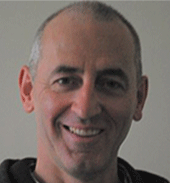Ventricles mediate the CNS ~ the mystery of structure and non-structure

Embryonic development of the CNS has grown out from the origins of the hollow neural tube which still exists as the fluid core of the fully developed brain and spinal chord. Brain growth has shaped and transformed the tube into ventricles and aqueducts. See the animation and images below to see how this takes place.Each cerebral hemisphere sits on a fluid bed of a lateral ventricle and the the third ventricle lies at the centre of the limbic system. The fourth ventricle sits between the brain stem and cerebellum. All four ventricles are in significant places. One for each of the major sections of the brain. How different the ventricles are to the organs of the brain. The simplicity of fluid spaces deep within the huge complexity of the brain. The brain has almost an infinite number of connections and the ventricles none other than with each other. It's like the space and fluid at the core are there to help the supercomputer balance and maintain homeostasis ~ the cooling system at the heart of an engine,
However, the ventricles do have one other significant connection, they have a unique relationship to the breath of life. Not all places are the same in the body, some places have a stronger connection to the force of life. As any practitioner will tell you the ventricles are quite unique in this connection. This makes them reservoirs of vital force and adds another insight into how the brain manages to function and survive all its huge workings without melting down. A deep connection to the breath of life is unique to the ventricles. There is nowhere in the body that is as rich in this connection. It's as if you have dropped back into the original creation space ~ an inner sanctuary of health. Non-structure within structure. Emptiness and void exist at our very centre. So it makes complete sense that stillness will be particularly expressed from here. CSF moves slowly through these spaces. 450ml a day is like a drip-feeding in and out of the system. While on the outside of the ventricles is an electric power station consuming the vast majority of blood and energy of the body to create kiloJoules of power output to sustain a billion impulses per second. The contrast is almost comical in its difference.

The brain is hungry for food and must be constantly fed to survive in health. The brain not only takes from the ventricles but also from the heart in it's huge need for potency and blood. Interesting the heart is essentially four ventricles and both brain and heart are based on inner spaces drawing from a source of energy beyond form. That's why a healthy system will always show you it's ventricular motion and why there is such a strong potentisation in the ventricles during still point. In shut down, I notice the ventricles are commonly not available and the CNS loses its access to simplicity and health and can therefore become hyper aroused. The nervous system becomes aroused in three stages mirroring the organization of the sensory nervous system into three levels or three orders of neurons. The first level is the peripheral nervous system. The second is the spine and brain stem and the third is the cerebrum and limbic system. As hyper arousal develops the ventricles shut down. Helping to reverse this process requires a openness in your perceptual field to ventricles and the fluid midline.
See how important a fluid touch is to the regaining of order in the nervous system and to de-traumatisation.





 Ged Sumner
Ged Sumner